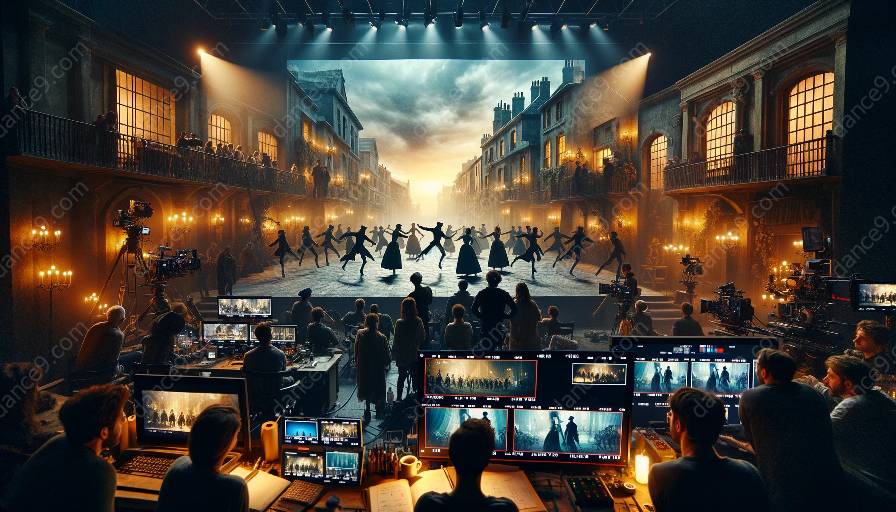Collaboration and communication play crucial roles in the art of film & television choreography. Dance sequences in movies and TV shows require a high level of coordination, creativity, and teamwork to bring the choreographer's vision to life on screen. This topic cluster will explore the dynamics of collaboration and communication within the context of choreography for film & television, providing insights into the intricacies and challenges of this collaborative process.
The Role of Choreography in Film & Television
Before delving into the collaborative aspect, it's essential to understand the significance of choreography in the realm of film and television. Choreographers are responsible for designing and arranging dance routines that synchronize with the narrative, characters, and visual aesthetics of a production. Their work contributes to the storytelling, emotional impact, and overall artistic expression of a film or TV series. Effective choreography enhances the audience's immersive experience and adds a layer of depth to the storytelling process.
Choreography for film and television also involves working closely with directors, cinematographers, and production designers to ensure that the dance sequences seamlessly integrate into the visual narrative. This collaboration requires meticulous planning, clear communication, and a shared vision among all involved parties.
The Collaborative Process
When choreographing dance sequences for film and television, the collaborative process encompasses several key elements:
- Vision Alignment: It begins with aligning the choreographer's creative vision with the overarching goals of the production. Understanding the narrative context, character dynamics, and thematic elements is essential for crafting choreography that resonates with the story.
- Director-Choreographer Collaboration: Effective communication and mutual respect are vital in the interaction between the director and choreographer. The choreographer must comprehend the director's vision and translate it into compelling dance movements that amplify the storytelling.
- Cinematography Considerations: Collaboration with the cinematographer is pivotal to ensure that the visual composition and lighting techniques complement the choreography. Choreographers and cinematographers collaborate to capture the dance sequences in a visually captivating manner, utilizing angles, perspectives, and camera movements to convey the choreographic nuances.
- Actor-Choreographer Dynamics: When working with actors, choreographers need to establish a collaborative rapport to coach, guide, and incorporate the performers' unique physicality and style into the choreography. This synergy enhances the authenticity and emotional resonance of the dance performances.
- Time Constraints: Film and TV production schedules often demand tight timelines, requiring choreographers to efficiently communicate their ideas and adjustments within limited timeframes. Clear communication and streamlined collaboration are essential to meet production deadlines without compromising artistic quality.
- Interdisciplinary Collaboration: Choreographers must work seamlessly with various departments, including costume designers, makeup artists, and set decorators, to ensure that the dance sequences harmonize with the overall visual design and thematic coherence of the production.
- Adaptability and Flexibility: In the dynamic environment of film and television production, unforeseen changes and creative revisions are common. Choreographers must remain adaptable, open to feedback, and adept at recalibrating the choreography to accommodate evolving production dynamics.
Challenges and Solutions
Despite its creative rewards, choreographing for film and television presents unique challenges in terms of collaboration and communication:
Conclusion
Collaboration and communication are the cornerstones of successful choreography for film and television. Through effective collaboration with directors, cinematographers, and actors, choreographers bring their creative visions to life, enriching the visual narrative and emotional impact of the screen. By understanding the intricacies of this collaborative process, aspiring choreographers and enthusiasts gain valuable insights into the multi-faceted art of dance in the realm of film and television.






































